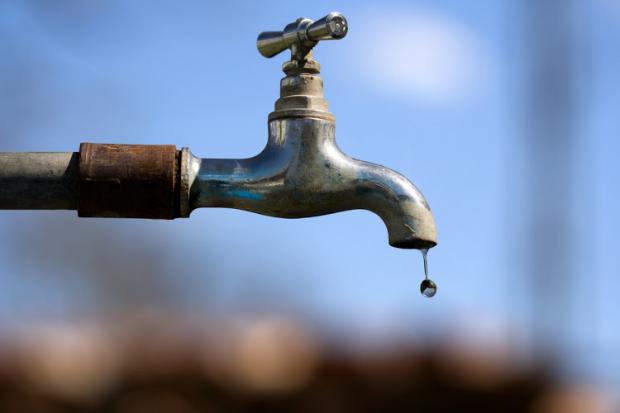
Breaking News
 Alternative Ways to Buy Farmland
Alternative Ways to Buy Farmland
 LED lights are DEVASTATING our bodies, here's why | Redacted w Clayton Morris
LED lights are DEVASTATING our bodies, here's why | Redacted w Clayton Morris
 How My Youtube Channel Makes Money
How My Youtube Channel Makes Money
Top Tech News
 Travel gadget promises to dry and iron your clothes – totally hands-free
Travel gadget promises to dry and iron your clothes – totally hands-free
 Perfect Aircrete, Kitchen Ingredients.
Perfect Aircrete, Kitchen Ingredients.
 Futuristic pixel-raising display lets you feel what's onscreen
Futuristic pixel-raising display lets you feel what's onscreen
 Cutting-Edge Facility Generates Pure Water and Hydrogen Fuel from Seawater for Mere Pennies
Cutting-Edge Facility Generates Pure Water and Hydrogen Fuel from Seawater for Mere Pennies
 This tiny dev board is packed with features for ambitious makers
This tiny dev board is packed with features for ambitious makers
 Scientists Discover Gel to Regrow Tooth Enamel
Scientists Discover Gel to Regrow Tooth Enamel
 Vitamin C and Dandelion Root Killing Cancer Cells -- as Former CDC Director Calls for COVID-19...
Vitamin C and Dandelion Root Killing Cancer Cells -- as Former CDC Director Calls for COVID-19...
 Galactic Brain: US firm plans space-based data centers, power grid to challenge China
Galactic Brain: US firm plans space-based data centers, power grid to challenge China
 A microbial cleanup for glyphosate just earned a patent. Here's why that matters
A microbial cleanup for glyphosate just earned a patent. Here's why that matters
 Japan Breaks Internet Speed Record with 5 Million Times Faster Data Transfer
Japan Breaks Internet Speed Record with 5 Million Times Faster Data Transfer
A Venezuelan prepper reveals how he made his own self-sufficient water supply

(Natural News) When SHTF, you'll need a steady source of food and potable water. Food is easy to stockpile, especially if you're familiar with the basics of short- and long-term food storage.
But do you know how to make your own self-sufficient water supply? (h/t to ThePreppingGuide.com)
Preppers are aware of the importance of having your own water supply because you will need access to water to keep your garden watered or wash your clothes.
For example, if you live in a country like Venezuela, several bottles of water won't be enough for your whole family. In this South American country, locals often have to deal with power cuts that can last for as long as five to six days, which highlights the importance of an accessible water supply.
While this rarely happens in the U.S., preppers can still benefit from knowing how to set up a self-sufficient water supply. You never know when you might need to have access to enough water for your whole family. (Related: How to prepare for a drought.)
Setting up your own self-sufficient water supply
This particular self-sufficient water supply is suitable for areas that often have rainy weather. You will need several tanks on your roof, a simple gravity filtering system, and bleach to purify the water.
If you have the time, test your off-grid water supply to iron out any kinks. You may also need to configure your setup so the water doesn't taste too strong.
Ideally, your water supply should allow you to:
Supply toilets with crude and untreated rainwater.
Install the DIY gravity filter system in a central area, like your kitchen.
Set up a stainless pipeline through the roof and down to the secondaries activated carbon filters. You can configure an ozone purifier for a backup.
Support our mission and enhance your own self-reliance: The laboratory-verified Organic Emergency Survival Bucket provides certified organic, high-nutrition storable food for emergency preparedness. Completely free of corn syrup, MSG, GMOs and other food toxins. Ultra-clean solution for years of food security. Learn more at the Health Ranger Store.
This setup will give you access to a reserve water supply that will keep your home running even if the city pumps stop working in your area.
Another option is to set up a boiling system that can purify rainwater. Try to build this water supply inside a wood furnace made of bricks in your kitchen. This rainwater purifier also eliminates the need for bleach, unlike the first option.
If you're bugging out or camping, you also need access to a portable water supply. Consider buying something like a Big Berkey water filtering system so you still have access to clean drinking water even if you're on the go.
Set up your own self-sufficient water supply today so you'll have one less thing to worry about when SHTF.
Water storage tips for preppers
Here are some additional tips for safe water storage:
Replace your water supply every six months – Stored water may have some contaminants, so replace the water in your supply every six months.
Store water for bathing and cleaning – Don't forget that you'll also need water to bathe and clean utensils. Keep track of how much water your household consumes on a daily basis so you know how much to store when preparing for a survival scenario.

 No Excuses: Throw A Party!
No Excuses: Throw A Party!


